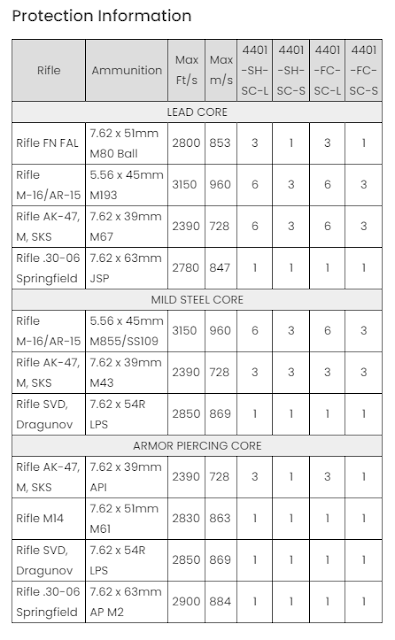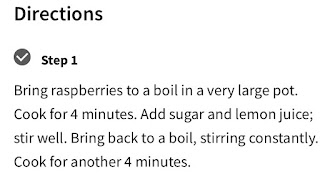 |
Not actually Erin.
& is used with permission.
|
Ballistic Fiber
You know this best as Kevlar, but there are other materials on the market which have similar properties. Most kevlar armor is soft, although hard armor such as ballistic helmets and speed plates do exist; these are Kevlar fibers coated with a polymer resin to produce a durable, rigid form.
Soft armor works through a process I like to call ballistic spaghetti. Normally the woven fibers are flexible (if stiff), but when struck by a fast-moving object the strands, which are stronger than steel, clump together like pasta around the bullet and prevent it from breaking through. This clumping weakens the weave of the material, however, so further strikes to the same area are more likely to punch through. Kevlar weave is also highly slash-resistant, but is only moderately stab-resistant; a stab concentrates cutting force at a point smaller than that of a bullet, whereas a slash only damages the outer layers. Many police officers have a small trauma plate over their heart to further protect from knife attacks.
Kevlar helmets are designed primarily to protect the head from shrapnel and falling damage, but they can protect against some bullets. However, they are designed to redirect the damage; a direct hit is still likely to penetrate it. See the video for more information.
Kevlar fibers are sensitive to acids, salts, and ultraviolet light, which is why most such vests come with an expiration date; it is assumed that these vests are being worn daily and that the sweat of the wearer's body is breaking it down. If kept out of the sun and in a climate-controlled area, such as your closet, these materials ought to last your lifetime.
Steel
Unlike Kevlar, steel armor will last forever so long as it doesn't rust, and most armor comes with a protective covering similar to pickup bed liner to prevent that. Steel will also protect against multiple hits from most non-armor piercing rounds through the simple fact that it is stronger and denser than lead or copper bullets, which will break upon impact. However, "breaking apart upon impact" isn't always great, as this leads to what is known as spalling which can cause injury and even death.
As an example, let us assume a 5.56 M855 bullet strikes a steel plate head-on at 3,100 feet per second. With no deflection, all that force has to go somewhere, and since the bullet cannot penetrate the plate (although it will break the lining and likely leave a dent or dig a divot in the metal) the force will break the bullet into pieces... which are still going quite fast... and since the fragments cannot go forward, they will deflect to the sides. These fragments are known as spall, and unfortunately one of the directions the spall can deflect is towards your head, specifically your unarmored neck and face. Sharp, fast-moving fragments in that area can be debilitating, if not lethal. A protective coating on steel plates helps reduce spall, but will not prevent it.
Finally, steel plates are heavy. I realize this elicits a "Well, duh" comment from many of you, but really, they are heavier than you think. As I mentioned previously:
I have worn level III steel plates, and within 5 minutes my shoulders hurt; after 15 minutes I was in such discomfort that the only thing which would make me keep them on is being shot at.The steel plate which I wore was two 8 pound plates carried front and rear in a plate carrier. My ceramic armor is two 7.4 pound plates, again carried front and rear. The steel feels significantly heavier than the 1.2 pounds of difference between the materials.
I also own level IV ceramic armor. While it weighs about the same as level III steel, because it is larger it feels lighter due to the larger dispersion of weight. I was able to wear my level IV for 15 minutes before feeling a stiffness in my neck and shoulders (that "I need to stretch it and make it go pop" feeling) but I was able to wear it for an hour before I started to cramp up.
Ceramic
It sounds like ceramic armor is the best kind, doesn't it? I admit that it's great, but but it isn't always the best choice. On the negative side, ceramic is fragile; if you drop it or you fall on it, and it breaks, your armor is pretty much done. Ceramic armor is also only NIJ rated for one shot of .30-06 M2 armor piercing ammunition; steel is rated for six shots. Depending on the armor and the caliber and composition of the bullet, ceramic might stand up to more hits; it's up to you to figure out what your armor can do. Here's the information from my plate, which is a 4401-SH-SC-L:
As you can see, while it can stand up to a lot of hits, there are some calibers or types of ammunition where it protects by failing; i.e. the force of the bullet is distributed through the material by breaking the ceramic. In lesser cases, the ceramic breaks up the bullet and makes it larger so that the Kevlar backer can catch it and stop it. Level IV plates are more likely to fail to bullet mass than to bullet velocity for a single hit, but unlike steel they will fail just from being shot in the same location several times. Once the ceramic is shattered, it starts falling out and all that’s left is the Kevlar backer that cannot stop a rifle round on its own.
(Yes, I said Kevlar. That means ceramic plates are also susceptible to damage from sweat and UV radiation. Remember what I said earlier about "No overall winners"?)
It's up to you to decide what your needs are, and that is what will inform your choice of purchase. If you want something to leave in the trunk of a car in case of trouble, steel is a good choice. However, if you think you will be wearing it a lot, or doing a lot of walking with it (as opposed to sitting and riding), then ceramic is probably better for you.
Ultra High Density Polyethylene (UHDPE)
After publishing this article it was pointed out to me that I neglected UHDPE. That oversight has been corrected with this article.
A Final Word on Impact
Just because a bullet is stopped from penetrating doesn't mean that it will have no effect on you! The force of impact will still be transmitted to your body; it will just be spread out across a larger area.
Think of it like this: a pin moving at a slow speed will penetrate your skin because all the force of the impact is focused on its tip. A fist moving at that same speed will not penetrate your skin, because the force is spread across a larger surface area. A fist moving at a faster speed will hurt you, but a sledgehammer swung at that speed will break bones. The speed of sound is 1,125 feet per second; most AR-15 rounds will be going nearly three times that velocity.
If you are struck by a bullet while wearing ballistic armor, you will feel every bit of the 1000+ foot-pounds of energy in that shot. Expect to be knocked off your feet because you the impact will hurt so much your legs will fail. Expect to have the wind knocked out of you. Expect to have some really impressive bruises, and maybe even some broken bones. You will not be having a good day.
But you will be alive.




















